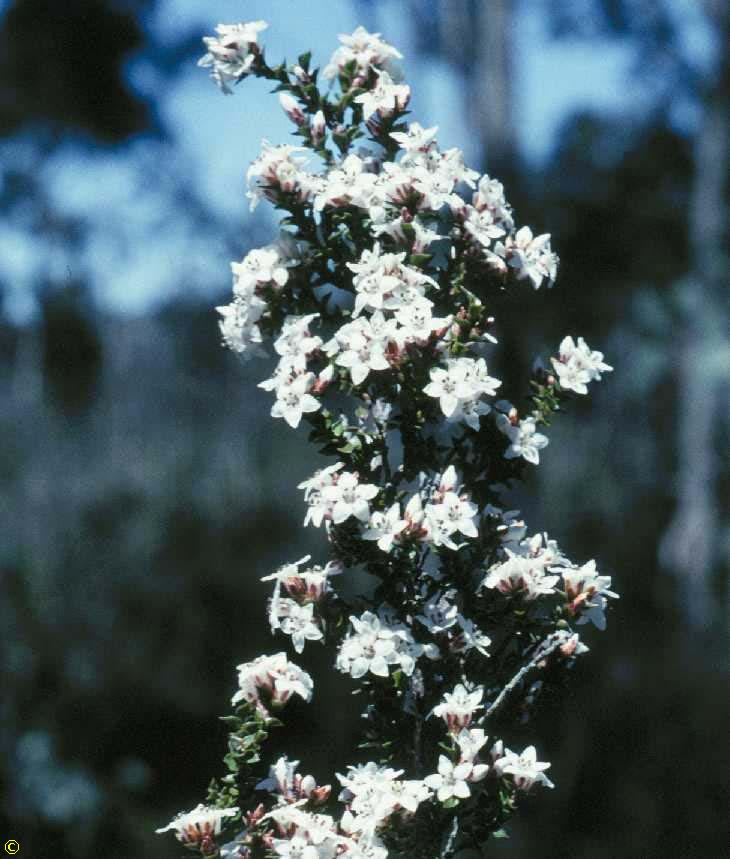Scientific Name: Epacris acuminata Endemic Having a natural distribution confined to a particular geographic region
Common Name: claspleaf heath
Family Classification (Clade): Eudicots
Family: Ericaceae
Form Description: An erect bushy shrub.
Height (m): 0.6 – 1
Flowers: Few, in axils of upper leaves. White, tubular with oblong, rounded lobes shorter than tube.
Fruit: Papery capsule
Municipality
Plant Communities
Habitat Notes
Occasional from sea level to about 900m. On rocky river banks, shrubberies, flood zones. Wet dolerite soil.
Propagation Calendar
-
Flowering Month
Jan Feb Mar Apr May Jun Jul Aug Sep Oct Nov Dec -
Seed Collecting Month
Jan Feb Mar Apr May Jun Jul Aug Sep Oct Nov Dec -
Sowing Month
Jan Feb Mar Apr May Jun Jul Aug Sep Oct Nov Dec -
Cutting Month
Jan Feb Mar Apr May Jun Jul Aug Sep Oct Nov Dec
Propagation Method
Seed Information
Seed Collection
Difficult to propagate. When the lower capsule on the stem has opened the capsules higher on the stem are ready for collection.
Seed Treatment Method
Bog Method The seeds of many wetland species need to be kept wet to germinate. Punch a hole in the side of a recycled polyfoam box so that it holds water to the required depth. Sit the tubes in the box to germinate. Once germinated, punch holes in the bottom of the box to allow drainage.
Seed Treatment Notes
Smoke treatment has been found to significantly improve results for Epacris species with smaller seeds but not for species with woody fruits or larger seeds. Using older seed may improve results. Seed may have dormancy; storage in cool, dark place for 3-6 months may improve results. Using the bog method, seed should be spread over surface of propagation mixture. If the medium is kept constantly moist, germination should occur within 10-20 weeks. Further experimentation is needed.
Germination Time
10-20 weeks
Cutting & Division Information
Grown from tip cuttings, best taken in March and placed into individual tubes. This avoids problems in the growing on process due to the very fine root systems.
